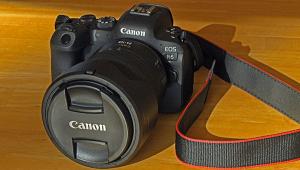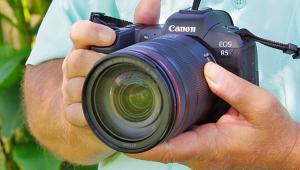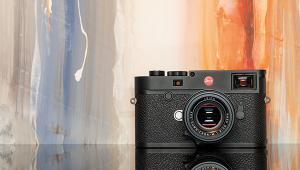Fujifilm X-T2 Mirrorless Camera Review

(Editor’s Note: Lab Review lab tests and comments are supplied by BetterNet, Shutterbug’s TIPA-affiliated testing lab and edited by George Schaub. Shutterbug is the sole U.S. representative within TIPA, a worldwide association of photo and imaging magazines. Check our website for our upcoming Field Review of the Fujifilm X-T2 where we put the camera through real world tests and post full resolution sample images.)
The X-T2 is Fujifilm’s second mirrorless camera with the new “X-Trans CMOS III” sensor, first seen in the company’s top-of-the-line X-Pro2 model. The X-T2 offers 24 megapixels of resolution and is Fujifilm’s first X-series camera that is able to record video in 4K resolution.




Features, Build & Handling
While the Fujifilm X-Pro2 offers a rangefinder design and a unique hybrid viewfinder, which combines optical rangefinder technology with LCD screens, the new X-T2 has an SLR-like design and an electronic viewfinder, like standard mirrorless cameras. The viewfinder of the X-T2 is a high-resolution system that can be used for sports photography and other scenes with fast-moving objects. Even when using continuous shooting modes, the viewfinder offers comfortable monitoring of the scene.
The Fujifilm X-T2 has a brand-new AF system based on a hybrid AF configuration that combines phase detection and contrast metering. It is very fast and offers a lot of AF areas. The camera also offers different AF area settings, with 3x3, 5x5, and 7x7 AF sensor zones. Setting up the AF areas is very easy: a small joystick on the back can be used to change areas or choose a single AF sensor very quickly and easily.
The top of the camera has numerous function dials. On the top left-hand side, the photographer will find the ISO setup dial. It offers settings from ISO 200 to ISO 12,800. In addition, it offers a L (Low) and a H (High) setting for ISO 100 to ISO 25,600. To use the maximum high mode of ISO 51,200, the photographer has to go to the basic setup menu (“tools” icon + “ISO speed dial setting”) and switch between 25,600 and 51,200.
On the top right-hand side, the shutter speed dial allows for settings of “Bulb” and between 1 second and 1/8000 second. Additional shutter speed settings are available by using the setup dial on the back with the thumb of the right hand: this allows settings such as 1/80 second or 1/100 second when the main setup dial is at 1/60 second or 1/125 second. When using the electronic shutter speed system (only) the camera offers additional shutter speeds up to 1/32,000 second.
When setting the shutter speed to “A” and the aperture mode switch on the lens to “A,” the camera works in P/Automatic mode. By changing one of these parameters to manual the camera can be used in aperture or shutter speed priority exposure mode.
Beneath both dials for ISO and shutter speed are two additional setup rings. The one on the left-hand side is used to choose modes such as single shot, continuous shot (high and low speed), and more. The setup ring beneath the shutter speed dial is used to choose controls such as spot metering pattern.
The camera lacks a built-in flash system, but is supplied with a compact flash unit. It has a hot shoe for compact flash units, including Fujifilm’s TTL metering, and for remote triggers when using a studio flash system.
The camera offers a third dial on the top that allows the user to change automatic exposure settings by +/- 3 f/stops. It can be easily reached with the thumb of the right hand.
For menu navigation and parameter settings the camera offers a four-way control field. The buttons of this control field are also function buttons and are user definable. In combination with two parameter dials and a small joystick, menu navigation and parameter setups are very quick and comfortable. The camera also offers a Q (Quick) menu button to display basic image parameters on the screen that offers instant access to white balance settings and much more.
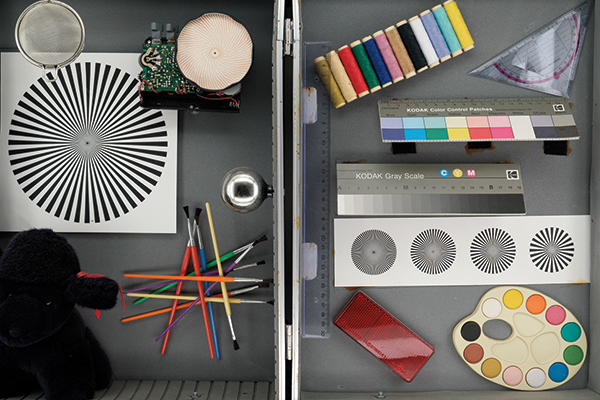
Comments on Image Quality
Color: The automatic white balance system of the Fujifilm X-T2 showed an ambivalent behavior. The test shot of the GretagMacbeth chart shows a shift of some neutral gray tones into the bluish and even the magenta area of the color space (note: the latter is very unusual). The portrait shot with fluorescent light shows a shift into the yellow and green direction. Nevertheless, the X-T2 creates very nice and natural-looking colors. The portrait shot shows very nice colors. The differentiation of red colors is very good. The standard test box shows that near colors are clearly differentiated into their different luminance values.
The result chart also shows that color error level is very low, only some blue nuances show some mentionable shifts because of a higher saturation. The average saturation is a little high (103.5 percent). The camera offers a lot of “film simulations” and additional settings to adjust color behavior. It also permits the photographer to change settings for “light” and “shadow” reproduction in the menu.

Sharpness: For the test of the Fujifilm X-T2 we used two lens systems. The Fujinon XF18-55mm F2.8-4 R LM OIS was used for real-life shots, including continuous mode speeds on the street and our portrait shot, and the Fujinon XF23mm F1.4 R was used for technical tests like the resolution chart. In combination with this lens, the camera reproduced the ISO 12.233 chart with 3,843 of 4,000 lines per picture height.
To achieve this high result the test images are optimized by the camera processor and show some over-sharpening effects. When shooting real-life scenes the over-sharpening effect isn’t visible. The sharpness of details in our portrait shot and in the test box shot is very high, but doesn’t look artificially exaggerated.
Noise: The new Fujifilm X-T2 performed very well in our noise tests. Luminance noise is very low and keeps way below the 1.0 percent line up to ISO 6400. In images shot at ISO 200 to ISO 800 it can be noticed as a kind of “film grain” in some image elements. Color noise is a little higher; the camera uses an intense anti-noise filtering that is clearly visible in images taken with ISO 6400 and ISO 12,800.
The camera showed a very good performance in our dynamic range test. It achieved a maximum of 11 f/stops and keeps a high dynamic range level between ISO 400 to ISO 3200 (10 to 11 f/stops).
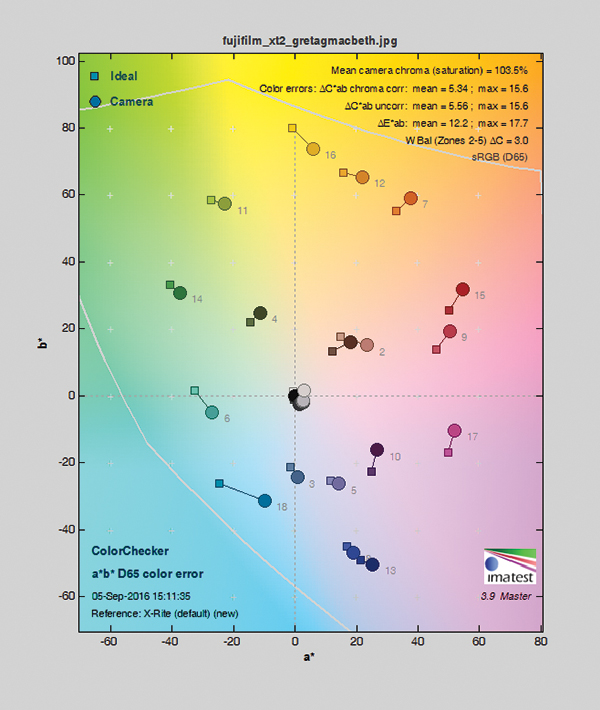
Comments on Video Functions
The new X-T2 is Fujifilm’s first X-series camera that is able to shoot video in 4K resolution. 4K videos are recorded in the UHDTV resolution of 3840x2160 pixels, which is 4x Full HD. The camera is able to record up to 30 frames per second in this mode and offers additional frame rates like 25 and 24 frames per second for using the X-T2 for PAL videos and for Blu-ray compatible systems. The camera also offers video recording in Full HD mode with up to 50/60 frames per second, which is helpful when taking shots of fast-moving subjects. All videos are recorded as MOV files with H.264 compression. The camera uses high bit rate recording; the files are recorded with up to 100 Mbit/s.
The Fujifilm X-T2 doesn’t offer an additional video recording button. To record it has to be switched into the video mode, done with the image mode ring right below the ISO speed dial. When switching the camera into this mode it shows a 16:9 live image on the screen; the shutter release button is used as the start/stop button.
The camera allows use of all standard exposure modes. Just like in photo mode, shutter or aperture priority mode is chosen by changing the shutter speed dial setting or the aperture ring. In addition, the photographer can use manual ISO speed settings in all exposure modes.
The Fujifilm X-T2 offers manual sound level control, including a level bar graphic on the screen, and can be used with an external microphone. It offers a 3.5mm microphone jack on the left-hand side of the body.

Comments on Video Quality
The Fujifilm X-T2 performed very well in our video tests. The ISO 12.233 chart was reproduced with high resolution. In 4K mode, the camera recorded the test scene with 1,970 of 2,160 lines per picture height; in Full HD mode the result was even better, with 1,038 of 1,080 lines.
The color reproduction in video mode is similar to the photo results. The automatic white balance system caused a slight shift into bluish and color areas with a higher magenta rate. Colors show only minor aberrations; only the blue nuances are a bit oversaturated.
The camera also performed well in noise tests: the luminance noise level is a little lower than in photo mode and color noise is filtered very intensively. In our dynamic range tests the results are a little disappointing: the camera achieved a maximum of 9.01 f/stops in video mode. (Note: We feel the dynamic range results can be improved by choosing different color modes and film simulation settings.) However, the camera doesn’t offer a dedicated flat image profile like “S-Log” or similar, which is offered by Panasonic and Sony cameras.
Scorecard
Pros
* Fast mirrorless camera for high-quality images
* High resolution, nice colors
* Numerous setup dials and function buttons for professional handling
* Splash-proof design
* High-resolution viewfinder plus swivel LCD on the back
* Integrated Wi-Fi system for remote control and data transfer
Cons
* Some functions/setup parameters are a bit hidden in the menu or confusing (ISO 25,600/51,200 setup, for example)
The Fujifilm X-T2 (body only) has a list price of $1,599. For more information, visit fujifilmusa.com.
(Lab Review is where we publish web-exclusive lab reports on cameras. To read more Lab Reviews, click on the Reviews tab on the top navigation bar of this page. New photo gear reports are published frequently, so check Reviews for more equipment evaluations from Shutterbug writers.)
- Log in or register to post comments











